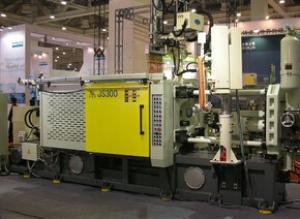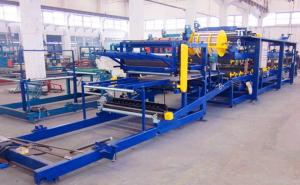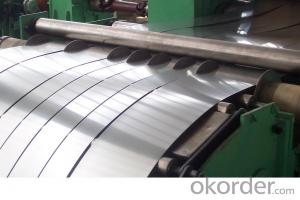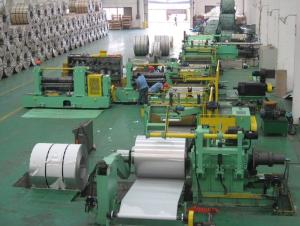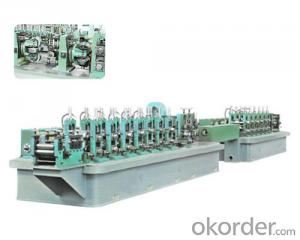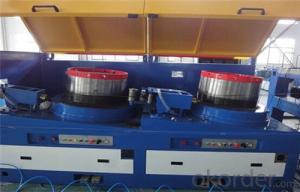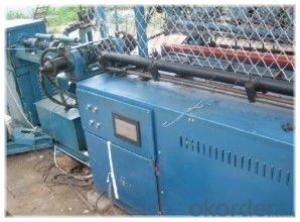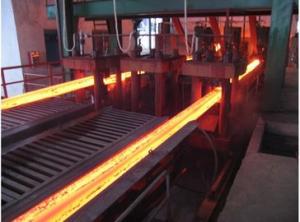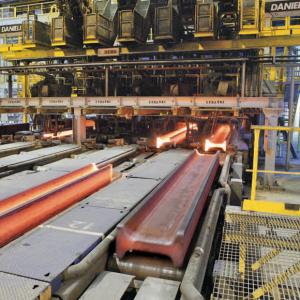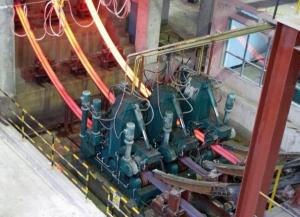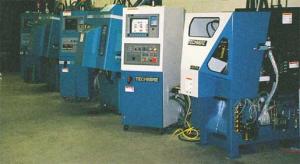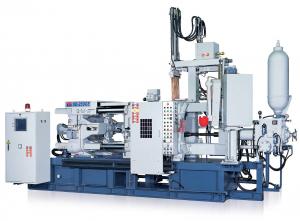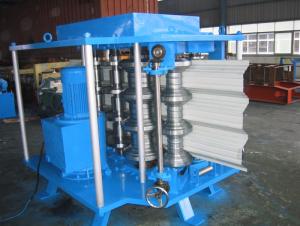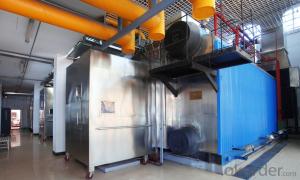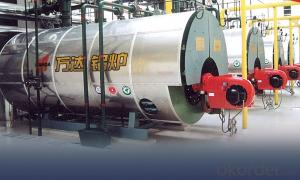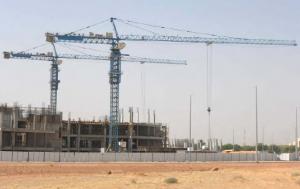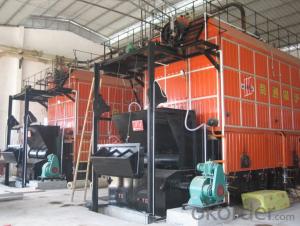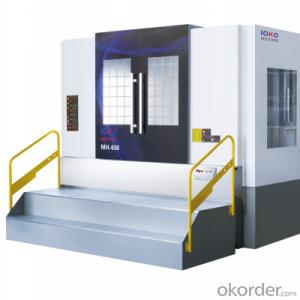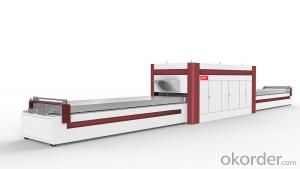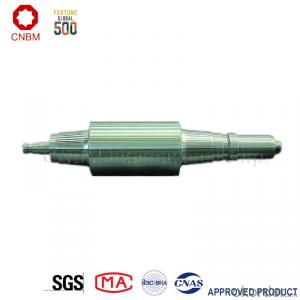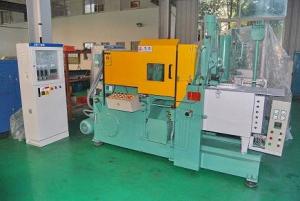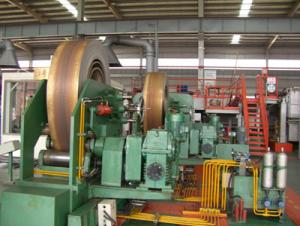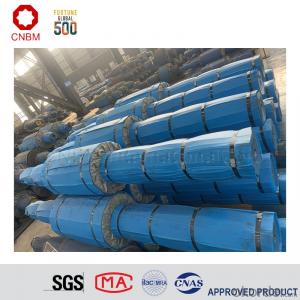Hight quality producing aluminium die casting machine
OKorder Service Pledge
Quality Product, Order Online Tracking, Timely Delivery
OKorder Financial Service
Credit Rating, Credit Services, Credit Purchasing
You Might Also Like
Specifications
1.Top brand of China in die casting machine line
2.Touch screen PLC
3.Fully automatic is available
4.2600Ton sold to Germany
Hydraulic system,and control system
1.All electric elements, valves, pumps and seal parts are made in Germany or Japan.
2.Imported proportional pressure valve and proportional flow valve for controlling the pressure and flow so that the mechanism can run quickly,stably,safely,reliably and energy-savingly.
- Q:What are the steps involved in the operation of metal casting machinery?
- The operation of metal casting machinery involves several steps to ensure the accurate and efficient production of metal castings. These steps typically include: 1. Pattern creation: The first step is to create a pattern, which is a replica of the desired metal casting. The pattern is usually made from wood, plastic, or metal and is used to create the mold for the casting. 2. Mold preparation: Once the pattern is ready, it is used to create the mold. The mold is made by pressing or pouring a mixture of sand and bonding agents around the pattern. The mold is then allowed to harden and set. 3. Pattern removal: After the mold has hardened, the pattern is removed from the mold cavity. This can be done by either pulling the pattern out or by breaking the mold, depending on the type of pattern used. 4. Preheating the mold: Before pouring the molten metal into the mold, it is important to preheat the mold to prevent thermal shock. Preheating also helps to remove any moisture or volatile compounds from the mold. 5. Metal melting: The metal to be cast is melted in a furnace. The type of furnace used depends on the metal being cast and can range from electric induction furnaces to gas-fired furnaces. The metal is heated to its melting point to ensure it becomes molten and ready for pouring. 6. Metal pouring: Once the metal has melted, it is poured into the mold cavity. Care must be taken to ensure the metal is poured evenly and at the correct temperature to prevent defects or inconsistencies in the final casting. 7. Cooling and solidification: After the metal is poured, it begins to cool and solidify inside the mold cavity. The cooling time depends on the size and thickness of the casting, as well as the type of metal used. Cooling can be accelerated by using cooling fans or water-cooled molds. 8. Mold removal: Once the metal has completely solidified, the mold is removed. This can be done by shaking, vibrating, or breaking the mold, depending on its type. The mold is typically destroyed during this process, as it cannot be reused. 9. Finishing and cleaning: The final step involves removing any excess material, such as gates and risers, from the casting. The casting may also undergo additional processes, such as sandblasting, grinding, or machining, to achieve the desired surface finish and dimensions. Overall, the operation of metal casting machinery requires careful attention to detail and precision to ensure the production of high-quality metal castings.
- Q:How are molds rotated and controlled for centrifugal casting in metal casting machinery?
- In centrifugal casting, molds are rotated and controlled by mounting them onto a spinning axis within the metal casting machinery. As the axis rotates, the molten metal is poured into the mold cavity. The centrifugal force generated by the spinning motion distributes the molten metal evenly along the mold walls, creating a hollow casting. The speed of rotation and the angle of the mold axis can be adjusted to control the thickness and quality of the final casting.
- Q:How does metal casting machinery prevent the formation of cracks in castings?
- Metal casting machinery employs a variety of techniques and processes to hinder the occurrence of cracks in castings. A primary method involves the regulation of the cooling rate during the solidification process. By skillfully controlling this rate, the machinery ensures uniform solidification of the molten metal, thereby decreasing the likelihood of cracks caused by uneven cooling or thermal stress. Another approach employed by metal casting machinery to prevent cracks is the utilization of appropriate gating and risering systems. These systems ensure a consistent flow of molten metal into the mold, preventing the formation of voids or trapped air that may lead to cracks. Additionally, the gating and risering systems aid in controlling the solidification process, enabling a more regulated cooling rate and minimizing the chances of thermal stress-induced cracks. Furthermore, metal casting machinery incorporates the use of cores and chill plates to prevent cracks in castings. Cores are utilized to create internal cavities or intricate shapes in the casting, providing additional support and stability during solidification. Chill plates, on the other hand, rapidly cool specific areas of the mold, preventing the formation of hot spots that could give rise to cracks. Moreover, metal casting machinery may introduce various additives or alloying elements to enhance the mechanical properties of the casting and reduce the likelihood of cracks. These additives enhance the metal's resistance to thermal stress and contribute to improved overall structural integrity. In conclusion, metal casting machinery effectively prevents cracks in castings through the regulation of the cooling rate, the implementation of proper gating and risering systems, the utilization of cores and chill plates, and the incorporation of additives or alloying elements. By meticulously managing these factors, metal casting machinery ensures the production of castings with minimal defects and optimal structural integrity.
- Q:How does computer-aided design (CAD) impact metal casting machinery?
- Computer-aided design (CAD) has a significant impact on metal casting machinery by revolutionizing the entire casting process. CAD enables engineers and designers to create highly detailed and complex digital models of metal parts and components, which can then be used to optimize the metal casting process in various ways. Firstly, CAD facilitates the design and creation of more precise and intricate metal parts. The software allows designers to accurately model the desired shape, dimensions, and features of the part, ensuring a higher level of precision and consistency in the final product. This level of precision is crucial in metal casting, as even small variations can affect the overall quality and functionality of the casted part. Moreover, CAD enables engineers to simulate the casting process virtually before it is carried out physically. The software can simulate the flow of molten metal, heat transfer, solidification, and other critical aspects of the casting process, allowing for the identification and correction of potential issues or defects. By optimizing the casting process virtually, manufacturers can minimize the occurrence of defects, reduce material waste, and improve overall efficiency. Additionally, CAD software allows for the quick and easy modification of designs. If any changes or improvements are required, designers can simply modify the digital model rather than starting from scratch. This flexibility not only saves time and effort but also enhances the iterative process of continuous improvement in metal casting. Furthermore, CAD plays a vital role in the integration of computer numerical control (CNC) machining with metal casting machinery. CNC machines can read CAD files directly, enabling the production of molds, patterns, and other casting tools with high precision and accuracy. This integration streamlines the workflow, reduces manual labor, and increases the overall efficiency of the metal casting process. Overall, computer-aided design has greatly influenced metal casting machinery by improving the accuracy, efficiency, and flexibility of the entire casting process. From designing complex metal parts to simulating the casting process and integrating with CNC machining, CAD has become an indispensable tool in modern metal casting, ensuring the production of high-quality casted components.
- Q:What are the different types of vents used with metal casting machinery?
- There are several types of vents used with metal casting machinery, including runner vents, riser vents, and vent holes. Runner vents are channels that allow molten metal to flow into the mold cavity, while riser vents are used to release trapped gases and allow molten metal to fill the mold completely. Vent holes, on the other hand, are small openings in the mold that enable the escape of gases during the casting process. These vents help ensure successful and high-quality metal castings.
- Q:What are the different materials that can be used in metal casting machinery?
- Some common materials used in metal casting machinery include iron, steel, aluminum, copper, and various alloys.
- Q:Can metal casting machinery be used for recycling purposes?
- Yes, metal casting machinery can be used for recycling purposes. Metal casting machinery is commonly used in recycling facilities to process and transform scrap metal into new products. The machinery is capable of melting down various types of metal, such as iron, steel, aluminum, and copper, and then casting them into molds to create new parts or products. This process allows for the efficient and cost-effective recycling of metal, reducing the need for the extraction of new raw materials and minimizing waste. Additionally, metal casting machinery can also be used to separate different types of metals, ensuring that each metal is recycled properly and used in the appropriate applications. Overall, metal casting machinery plays a crucial role in the recycling industry, enabling the conversion of scrap metal into valuable resources while promoting sustainability and environmental conservation.
- Q:How is the casting inspected for porosity in metal casting machinery?
- The casting is inspected for porosity in metal casting machinery through various methods including visual inspection, radiographic testing, and ultrasonic testing. Visual inspection involves examining the surface of the casting for any visible pores or holes. Radiographic testing uses X-rays or gamma rays to detect internal defects or porosity. Ultrasonic testing involves using high-frequency sound waves to detect and measure defects within the casting. These inspection methods help ensure the quality and integrity of the cast metal components.
- Q:What are the different types of regulations and standards governing the use of metal casting machinery?
- Metal casting machinery usage is governed by various regulations and standards, which prioritize worker safety and the quality of metal casting processes. Occupational safety and health regulations are one such type of regulation that oversees the use of metal casting machinery. These regulations, established by government authorities, outline the necessary safety measures and procedures that metal casting facilities must adhere to. They encompass guidelines on the appropriate use of personal protective equipment, machinery maintenance, and the safe handling of hazardous materials. Alongside occupational safety and health regulations, industry-specific standards also govern the utilization of metal casting machinery. Created by professional organizations or trade associations, these standards aim to promote industry best practices. They cover diverse aspects of metal casting, including equipment design, process control, and quality assurance. Adhering to these standards ensures that metal casting operations meet specific quality and performance criteria. Environmental regulations also play a pivotal role in governing the use of metal casting machinery. These regulations focus on minimizing the environmental impact of metal casting processes, encompassing air, water, and soil pollution. Compliance with environmental regulations necessitates proper waste management and disposal, the adoption of environmentally friendly technologies, and the implementation of pollution control measures. Moreover, international standards may also exist to regulate the use of metal casting machinery. These standards, developed by international organizations, are recognized and adopted by various countries. They encourage global harmonization and facilitate trade by ensuring that metal casting machinery manufactured in one country meets the requirements of other countries. Overall, the array of regulations and standards governing the use of metal casting machinery is indispensable for ensuring worker safety, maintaining the quality of metal casting processes, and safeguarding the environment. Compliance with these regulations and standards is crucial for metal casting facilities to operate effectively and responsibly.
- Q:What are the different types of core making processes used in metal casting machinery?
- Metal casting machinery utilizes various core making processes, each tailored to specific applications and materials. The principal core making methods encompass: 1. Shell core making: Employing a heated metal pattern enveloped in a blend of sand and resin, this technique solidifies the resin, resulting in a sturdy shell core that can be detached from the pattern and utilized accordingly. 2. Cold box core making: This process entails blending a sand mixture with a liquid resin and a catalyst. The amalgamation is propelled into a core box, where the resin reacts with the catalyst, causing the sand to harden. Subsequently, the core is extracted from the box and utilized during casting. 3. No-bake core making: Known as air-set or chemically bonded core making, this process utilizes a sand mixture bonded together with a liquid resin or adhesive. The core is then allowed to dry and solidify before being implemented in the casting process. 4. Hot box core making: In this method, a sand mixture is heated to a high temperature and then blown into a core box. The subsequent heat prompts the resin to react and solidify the sand, yielding a robust core. This technique is commonly utilized for larger, intricate cores. 5. Inorganic core making: This approach employs inorganic binders, such as sodium silicate or phosphate, to generate a solid core. These binders do not necessitate heat for hardening, making them suitable for certain applications where heat may be detrimental. Each core making process offers distinct advantages and disadvantages. The selection of which process to employ hinges upon various factors, including the type of metal being cast, the complexity of the core, and the desired characteristics of the final casting.
1. Manufacturer Overview |
|
|---|---|
| Location | |
| Year Established | |
| Annual Output Value | |
| Main Markets | |
| Company Certifications | |
2. Manufacturer Certificates |
|
|---|---|
| a) Certification Name | |
| Range | |
| Reference | |
| Validity Period | |
3. Manufacturer Capability |
|
|---|---|
| a)Trade Capacity | |
| Nearest Port | |
| Export Percentage | |
| No.of Employees in Trade Department | |
| Language Spoken: | |
| b)Factory Information | |
| Factory Size: | |
| No. of Production Lines | |
| Contract Manufacturing | |
| Product Price Range | |
Send your message to us
Hight quality producing aluminium die casting machine
OKorder Service Pledge
Quality Product, Order Online Tracking, Timely Delivery
OKorder Financial Service
Credit Rating, Credit Services, Credit Purchasing
Similar products
New products
Hot products
